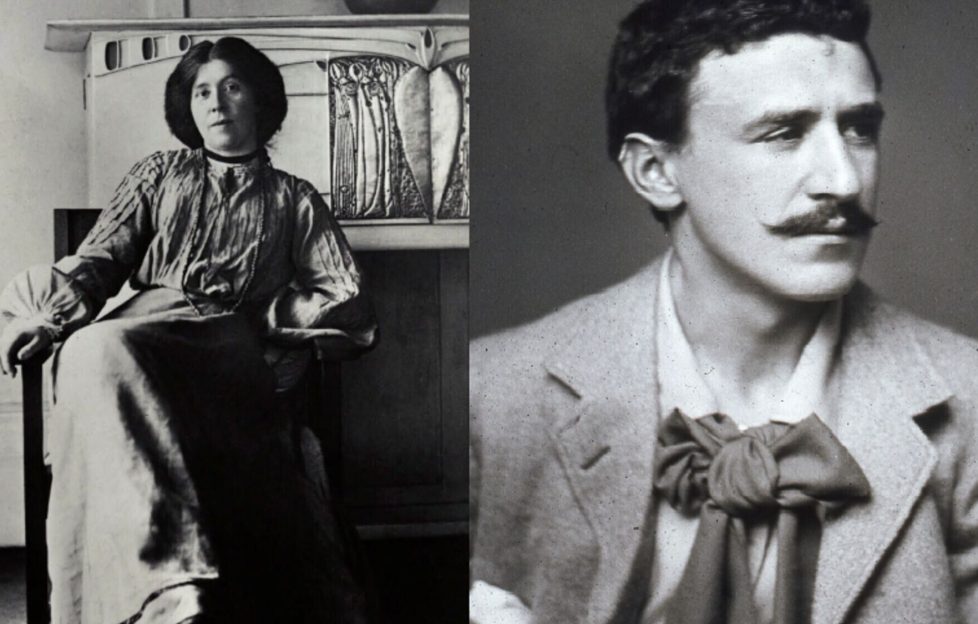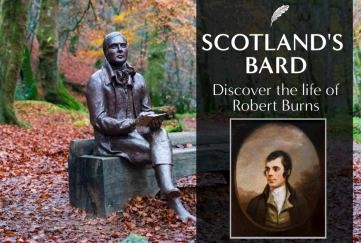Charles Rennie Mackintosh: Love Letters To His Wife

They were the definition of life partners. Here are some heart-warming excerpts from Charles Rennie Mackintosh’s love letters to his wife.
Some artists have muses, others have collaborators. Scottish architect Charles Rennie Mackintosh was a lucky man. He found both in one woman, his wife Margaret Macdonald Mackintosh.
The pair met in 1892 as students at the Glasgow School of Art, and they married in 1900. It was considered a rather controversial union for the Victorian era – an incredibly conservative time period.
Charles was 32 and Margaret 35, and Margaret never took on the role of a housewife. The couple never had children, instead they devoted their lives to each other and their shared passion for art and design.
The couple collaborated pretty much their entire careers, yet it’s difficult to decipher exactly which projects Margaret influenced aside from the famous Tea Rooms and Hill House. Victorian society unfortunately cast her husband’s success as a shadow over her own.
Margaret Macdonald Mackintosh was an accomplished artist and designer in her own right. Her work often incorporated intricate details and symbolic imagery, reflecting themes of nature, spirituality, and femininity.
Margaret’s brilliance was not lost on Charles. In fact, in one love letter he emphasised how integral she was to his work, “You must remember that in all my architectural efforts you have been half if not three quarters in them.”
Evidence of just how madly in love Charles was with Margaret can be found in the letters he wrote to her during a six week separation. Margaret had to visit London for medical and dental care while Charles remained at their home in Port-Vendre, France.
He wrote to Margaret almost every day during and this was 27 years into their marriage. Margaret’s letters no longer exist, but Charles’ do.
In a letter dated May 1927, Mackintosh wrote, “Your letter does not suggest that you are content and happy – you must settle down and persevere and get over it – this advice from a bloated creature at Port-Vendres with no desire in the world except to have you back here to live our simple healthy life.”
And in June, he wrote, “In your last letter I hear a little cry as if you were tired of being alone. Well Margaret I have hated being alone all the time. Nothing is the same when you are not here, everything has a flatness. I feel as if I am waiting for something all the time, and that is true because I am waiting for you. Dear Margaret it will not be long now until we meet again.”
Despite what is now believed to be Charles’ dyslexia, his love for Margaret was so clearly spelled out on paper.
Just before Margaret’s return to France, he concluded his ‘chronycle’ of letters, “This chronicle seems to be full of fleeting impressions and disconnected sentences, but anyone who can read their meaning would find only three words, ‘I love you.'”
This was a man approaching 60, yet he wrote about their relationship as if it were young love.
They were so infatuated with one another that even their peers noticed and wrote poetically of them. After visiting their home in 1905, French painter, Blanche Ernest Kalas described the couple as “two visionary souls, in loving mateship … wafted still further aloft to the heavenly realms of creation.”
A tough act to follow!
Together, Charles and Margaret formed a formidable creative partnership, influencing the Glasgow Style movement of the late 19th and early 20th centuries. They worked together on iconic projects such as The Willow Tea Rooms in Glasgow and Hill House in Helensburgh.
Their innovative designs captured international attention and feel just as warm and romantic as their love.





